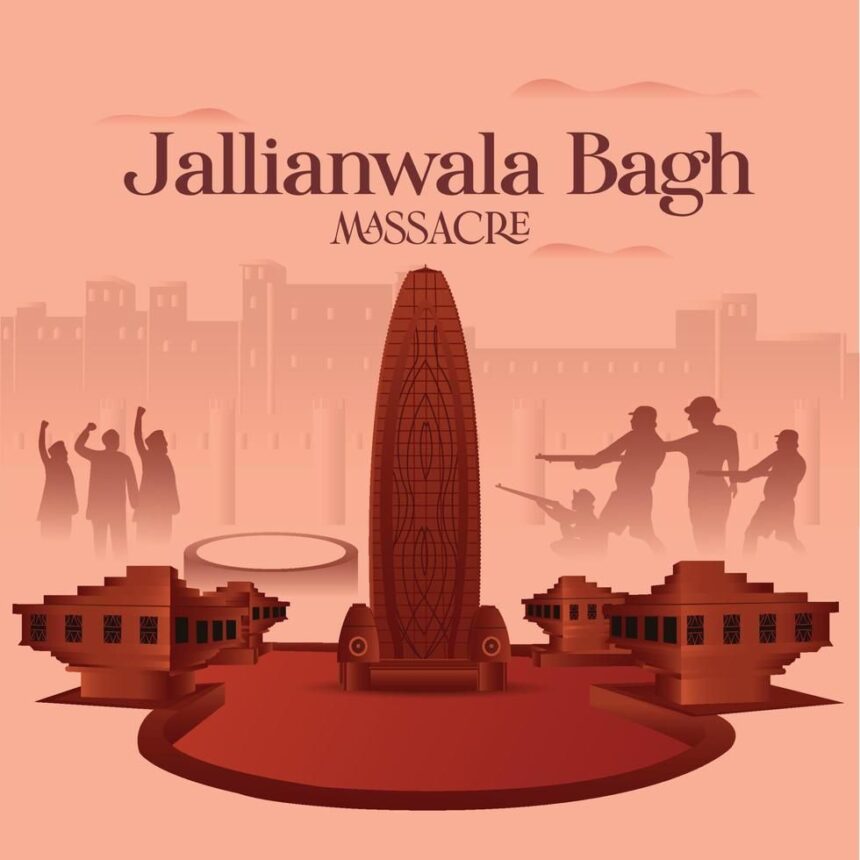🩸 10 Shocking Facts About the Jallianwala Bagh Massacre That Still Haunt Indian History
🩶 Introduction: A Wound That Changed a Nation
The Jallianwala Bagh Massacre, one of the darkest days in Indian history, took place on April 13, 1919, and left an indelible scar on the collective memory of a nation under British colonial rule. On this fateful day, hundreds of unarmed Indians—men, women, and children—were brutally gunned down in cold blood at Jallianwala Bagh in Amritsar, Punjab, by British forces under General Reginald Dyer.
- 🩶 Introduction: A Wound That Changed a Nation
- 📜 History of the Jallianwala Bagh Massacre
- 📆 Timeline of the Jallianwala Bagh Tragedy
- 📊 10 Shocking Facts About the Jallianwala Bagh Massacre
- 🙋♂️ Frequently Asked Questions (FAQs)
- Q1: Why did the Jallianwala Bagh Massacre happen?
- Q2: Who was responsible?
- Q3: What was the Hunter Commission?
- Q4: What was the Indian response?
- 🔍 Significance of the Jallianwala Bagh Massacre
- 1. Moral Awakening
- 2. Strengthened the Freedom Struggle
- 3. International Condemnation
- 4. Martyrdom and Sacrifice
- 🧠 Impact on Daily Life and Collective Memory
- 🕊️ Observance: How Is It Remembered?
- 💬 Wishing and Remembering
- 📌 Key Points Summary
- 🤝 Importance to Society
- 🔚 Conclusion: A Bloody Chapter, A Bright Legacy
This tragic incident is not just a memory of British cruelty, but a turning point in India’s freedom struggle, awakening the conscience of the country and the world.
📜 History of the Jallianwala Bagh Massacre
🔹 Background: A Tense Time in Colonial India
India was experiencing heightened unrest due to oppressive British policies and the Rowlatt Act of 1919, which allowed indefinite detention without trial.
Leaders like Dr. Saifuddin Kitchlew and Dr. Satyapal were arrested for peacefully protesting the Rowlatt Act, fueling widespread resentment.
The British feared rebellion and imposed a ban on public gatherings in Punjab, particularly in Amritsar.
🔹 The Fateful Day – April 13, 1919
A large peaceful gathering assembled at Jallianwala Bagh, near the Golden Temple, on Baisakhi, to protest and discuss political reforms.
Without warning or any attempt at crowd dispersion, General Dyer marched in with 90 soldiers, blocked the exits, and ordered them to fire indiscriminately on the unarmed crowd.
In 10 minutes, 1650 rounds were fired.
Official British estimates claimed around 379 deaths, but Indian sources say over 1000 people were killed and more than 1500 injured.
📆 Timeline of the Jallianwala Bagh Tragedy
| Year | Event |
|---|---|
| 1919 | April 13 – Massacre takes place under General Dyer’s orders |
| 1920 | Rabindranath Tagore renounces his knighthood in protest |
| 1922 | Hunter Commission Report condemns Dyer, but no punishment |
| 1940 | Udham Singh assassinates Michael O’Dwyer in London |
| 1951 | A memorial is erected at Jallianwala Bagh |
| 2019 | Centenary of the massacre marked by global remembrance |
| 2021 | Restoration and renovation of the memorial complex by the Government of India |
📊 10 Shocking Facts About the Jallianwala Bagh Massacre
Only one narrow exit existed, which Dyer blocked—trapping the people like animals.
No warnings were given—no sirens, no commands to disperse.
Children as young as seven years old were shot.
Many people jumped into a well to escape bullets—over 120 bodies were later recovered.
The massacre lasted about 10 minutes, yet changed Indian history forever.
General Dyer was never punished; in fact, he was supported by many in Britain.
Rabindranath Tagore returned his knighthood in protest of this inhumanity.
Winston Churchill, then Secretary of War, condemned the massacre as “monstrous.”
Udham Singh, a witness of the massacre, assassinated Michael O’Dwyer in 1940 as retribution.
The massacre shattered Indian faith in British justice, and led directly to the Non-Cooperation Movement.
🙋♂️ Frequently Asked Questions (FAQs)
Q1: Why did the Jallianwala Bagh Massacre happen?
The British wanted to suppress political dissent and deter Indians from opposing their rule. The peaceful gathering on April 13 was deemed a violation of British orders, and General Dyer decided to make an “example” of them.
Q2: Who was responsible?
General Reginald Dyer was the officer who ordered the firing. He acted under the British colonial government’s oppressive laws and policies.
Q3: What was the Hunter Commission?
A formal investigation launched by the British in 1920 that criticized General Dyer but took no disciplinary action. Indians widely viewed the commission as biased and unsatisfactory.
Q4: What was the Indian response?
The massacre led to:
Nationwide protests
Rabindranath Tagore returning his knighthood
Launch of the Non-Cooperation Movement by Mahatma Gandhi
Growth in revolutionary nationalism
🔍 Significance of the Jallianwala Bagh Massacre
1. Moral Awakening
It marked a complete breakdown of trust between Indians and the British. Even moderate leaders turned against British rule.
2. Strengthened the Freedom Struggle
The event acted as fuel for the fire of Indian nationalism. Gandhiji shifted towards a mass nonviolent resistance after this incident.
3. International Condemnation
The massacre drew criticism from liberal voices in Britain, and globally, India’s plight came into the limelight.
4. Martyrdom and Sacrifice
This day honors the martyrs of Indian independence, whose blood sowed the seeds of freedom.
🧠 Impact on Daily Life and Collective Memory
Even over a century later, the Jallianwala Bagh massacre lives on in the Indian conscience. It’s taught in schools, commemorated through literature and films, and remains a powerful reminder of resistance and resilience.
💔 Personal Impact
Many families lost multiple members, creating generational trauma.
Survivors lived with the scars—both physical and psychological.
🧒 Impact on Youth
Inspires young Indians to understand the price of freedom.
Cultivates empathy and respect for the sacrifices made.
🇮🇳 National Identity
The massacre forms part of India’s narrative of courage, unity, and nonviolent resistance.
Reminds every Indian of the cost of silence in the face of injustice.
🕊️ Observance: How Is It Remembered?
April 13 is observed as Jallianwala Bagh Shaheedi Diwas in India.
The site is a national memorial, preserved by the Jallianwala Bagh National Memorial Trust.
Candlelight vigils, speeches, history programs, and memorial services are held across India.
💬 Wishing and Remembering
🕯️ “On Jallianwala Bagh Martyrs Day, we bow our heads in reverence to the innocent souls lost to tyranny.”
🇮🇳 “Let us remember the brave who died so we could live with dignity and freedom.”
🩸 “Their blood watered the seeds of liberty—let us not forget their silent screams.”
📚 “Remembering Jallianwala is not about revenge; it’s about ensuring such horror never repeats.”
📌 Key Points Summary
Date: April 13, 1919
Location: Jallianwala Bagh, Amritsar
Death Toll: Estimated 1000+ (Indian accounts)
Main Figure: General Reginald Dyer
Outcome: Surge in Indian nationalism, launch of Non-Cooperation Movement
Legacy: Site preserved as a national memorial
🤝 Importance to Society
This tragedy is a grim reminder of:
The dangers of unchecked authoritarianism
The importance of civil rights, protest, and public voice
The power of resistance over submission
Understanding the Jallianwala Bagh massacre teaches us to value democracy, human rights, and freedom of speech—values that must never be taken for granted.
🔚 Conclusion: A Bloody Chapter, A Bright Legacy
The Jallianwala Bagh Massacre is not merely a page from history—it is a mirror of the past and a warning for the future. The haunting cries from Jallianwala still echo in the minds of freedom lovers. Let us honor the sacrifices of those innocent lives lost, not by hatred, but by building a nation grounded in justice, peace, and equality.
Let us carry forward their legacy—not just in memory, but in our daily actions for a better India.








